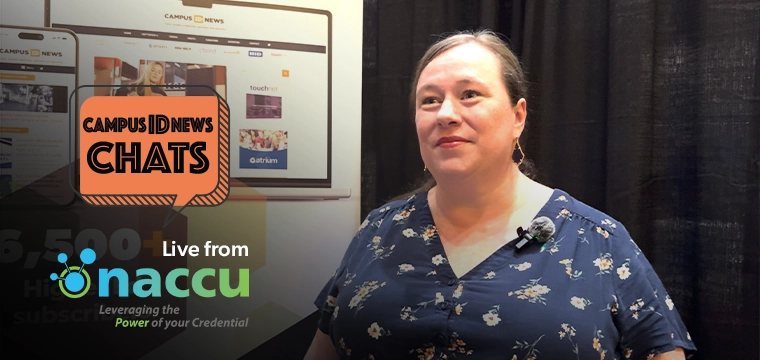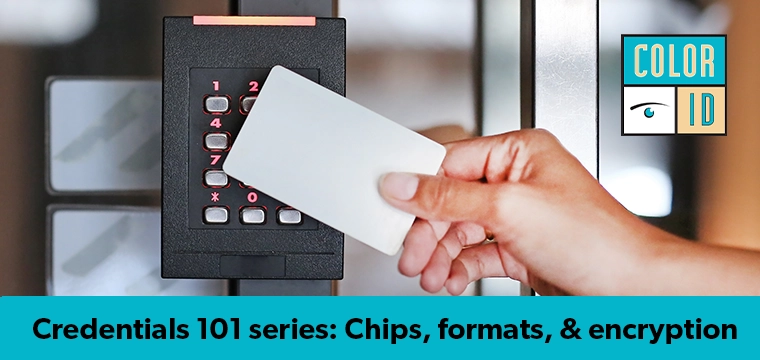Have off-campus programs become a virtual necessity for card programs?
 By Andy Williams
By Andy Williams
Contributing Editor
The decision to allow off-campus merchants, mainly restaurants and bookstores, to access students’ prepaid accounts used to be an easy one to answer: no way. But that attitude among colleges has been changing as more have found that on-campus income didn’t plummet as feared. Surprisingly, in many cases, it actually increased. Even one major campus dining provider saw that proverbial handwriting and two years ago acquired a company specializing in off-campus markets.
If done right, college campuses can turn what at first appears a loser into a money maker.
That’s one of the reasons one of the world’s largest providers of on-campus dining services, Sodexo, acquired one of the more successful off-campus program providers. France-based Sodexo, which recently dropped the “h” from its name, it had been Sodexho, operates dining and facility services at colleges, K-12, healthcare and corporate locations throughout the world. The food service giant purchased Penn.-based Off Campus Solutions (OCS) which currently serves 45 campuses in the U.S. “We’re growing fairly quickly,” says Monte Pedersen, senior vice president and CEO.
At first blush, it would seem that operating an off-campus program means the company is competing with itself for the same student dollars, at least on campuses where the company is operating dining halls.
“Part of Sodexo’s strategy in buying Off Campus Solutions in 2006 was in looking at the future and the evolution of meal plans,” says Pedersen. “When you compare that initiative with student lifestyles today, they’re very mobile and have more discretionary income.”
Former OCS chairman Ken Schwenke gives a simpler, if not blunter, perspective. “If you look at normal student dining habits, the kids today are all-day grazers, they’re not the three-meal-a-day generation. Even the good well-run dining facility would have trouble meeting their needs.”
Schwenke, now an independent consultant, says the “original meal plan model ties back to post World War II service. Meal plans have evolved from that and have included the three-meals-a-day model, all you can eat, etc. Kids are used to eating out so much that’s not a factor anymore,” he adds.
The on-campus dining facility has traditionally been, as Schwenke says, “the food of last resort.”
When Schwenke was trying to get OCS up and running, talking to campuses about offering off-campus, primarily dining, programs, his biggest resistance from campus administrators was that it would cannibalize the university’s on-campus programs.
But once he could show that wasn’t the case, that sentiment slowly disappeared.
“In no case where an off-campus program has been effectively designed with a meal plan have I seen a university lose money,” says Schwenke. “We looked at data from lots of schools and there was no money lost,” he adds.
At last year’s annual meeting of the National Association of College Auxiliary Services (NACAS), Schwenke presented data to support that.
Currently, there are nearly 200 off-campus programs in existence, up from 37 five years ago, and the rate of adoption continues to accelerate, he said in his presentation. “Industry forecasters expect penetration of off-campus programs to continue to increase, with nearly 50% of schools projected to have an off-campus program by 2010,” he added.
The benefits of an off-campus program is that they attract the upper classmen, on average, “an 11% increase in the first year alone,” he said. Again, citing averages, he concludes that after the launch of an off-campus program, “on-campus dining revenue was up 7.7% the first year, 8% the second year, and 9.5% the third year.”
Another finding is that deposits into a student’s on-campus flex account “jumped an average of 39% in the three years following an off-campus program launch.”
The core question any administrator should ask is: “Are the student’s dining needs being met? This isn’t a replacement for a Visa or a MasterCard product. It would have the highest parental acceptance if it were for food only,” adds Schwenke.
“If a student really would like the most flexible currency possible, that ideal would be to just have his parents give him cash. If you ask students whether they’d want cash or a cash card, they’d take cash.” But, he adds, parents would prefer something that would guarantee that their children are buying food.
A combination of both an on- and off-campus plans would “be able to serve those parts of the day – the grazers – you can’t economically serve through an asset-based meal plan,” says Schwenke.
He also discovered from his research that when students have the flexibility to eat on or off campus, many would opt for the on-campus offering simply because it’s more convenient.
Off Campus Solutions found that out with its off-campus program at a private western U.S. institution, says Pedersen. While the Academy of Art University in San Francisco, which uses the Off Campus Solutions program, didn’t report an increase in on-campus meal plan usage after the OCS program went into effect, it didn’t report a decrease either. The university’s Gay Buck said via email, that there are currently “462 students on the mandatory meal plan” and that number “has not increased or decreased because of OCS Knight Kash,” the name of the campus program.
This, adds Pedersen, is how a meal plan can be done effectively. “You build a comprehensive solution, you take advantage of an opportunity that had always been there. The local merchants did everything they could to lure students off campus and on campus dining did everything they could to keep students. With this increased competition, the winner, of course, is the student, says Pedersen.
“For years foodservice directors feared going off-campus. They were fearful that the popularity of eating off campus would cannibalize their on campus programs,” he adds. “That potential still exists if not managed correctly, but if built appropriately, the on-campus manager can see a significant rise in customer satisfaction and an increase in income.”
It’s all about balance. “Say, for example, you have a plan where the student is committed to eating 15 meals a week on campus. If you took those meals and converted them to cash and told the students they could eat on or off campus, you could crash your dining program,” warns Pedersen. “You need to have a balance such as offering them the flexibility of going with their friends and eating off campus once in awhile.”
Legal complexities make implementation easier said than done
There’s more to offering off-campus opportunities than simply doing it, Schwenke warns.
At last year’s NACAS meeting, Schwenke laid out the opportunities, but more importantly, the dangers involved with off-campus programs. That mostly includes complying with numerous state and federal laws and regulations.
“I’ve spent a half million dollars on legal advice so I have a pretty good knowledge of what schools can and can’t do,” says Schwenke. “It’s not a simple area and the other complicating factor is that it keeps on changing. There were a couple hundred laws pending in various state legislatures.”
These include money transfer laws and banking laws. “In some cases the state may consider that the university is engaging in banking if it takes deposits like a bank does, so if you don’t have a bank charter, you could be violating state banking laws. The other is the Patriot Act, passed by Congress after 9-11, where you have to know your customer. That includes checking them against known terrorist lists. “It’s a very, very complex field,” he says. “This is where the school’s attorney can earn his keep.”
“Regulatory compliance is very important in terms of off-campus commerce,” adds Pedersen. “The whole prepaid card industry is exploding and banking, money transmitting, and escheatment laws will become prevalent. In some cases it is a state-by-state regulation that determines how the money is handled. If you’re not working with someone who understands this, you could have significant liabilities. Off Campus Solutions prides itself on being regulatory compliant.”
The opportunities, however, far outweigh the dangers. Today’s student always has three things with him: his dorm room key (unless access is tied to the campus card), his campus card and his cell phone, says Schwenke. “There are huge opportunities here. If you’re not tied to some kind of cashless system and not grabbing the opportunity of having that system move off campus you’re missing a lot of things.”




